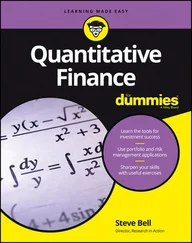Michael Taillard - Corporate Finance For Dummies
Здесь есть возможность читать онлайн «Michael Taillard - Corporate Finance For Dummies» — ознакомительный отрывок электронной книги совершенно бесплатно, а после прочтения отрывка купить полную версию. В некоторых случаях можно слушать аудио, скачать через торрент в формате fb2 и присутствует краткое содержание. Жанр: unrecognised, на английском языке. Описание произведения, (предисловие) а так же отзывы посетителей доступны на портале библиотеки ЛибКат.
- Название:Corporate Finance For Dummies
- Автор:
- Жанр:
- Год:неизвестен
- ISBN:нет данных
- Рейтинг книги:4.5 / 5. Голосов: 2
-
Избранное:Добавить в избранное
- Отзывы:
-
Ваша оценка:
- 100
- 1
- 2
- 3
- 4
- 5
Corporate Finance For Dummies: краткое содержание, описание и аннотация
Предлагаем к чтению аннотацию, описание, краткое содержание или предисловие (зависит от того, что написал сам автор книги «Corporate Finance For Dummies»). Если вы не нашли необходимую информацию о книге — напишите в комментариях, мы постараемся отыскать её.
Corporate Finance For Dummies,
Corporate Finance For Dummies,
Corporate Finance For Dummies — читать онлайн ознакомительный отрывок
Ниже представлен текст книги, разбитый по страницам. Система сохранения места последней прочитанной страницы, позволяет с удобством читать онлайн бесплатно книгу «Corporate Finance For Dummies», без необходимости каждый раз заново искать на чём Вы остановились. Поставьте закладку, и сможете в любой момент перейти на страницу, на которой закончили чтение.
Интервал:
Закладка:
Gross margin
The last part of the gross profit portion of the income statement is the gross margin, which you get by subtracting the cost of goods sold from the net sales. The gross margin is all the money a company has left over from its primary operations to pay for overhead and indirect costs, like the sales staff, building rent, janitorial services, and everything else that’s not directly related to the production or purchase of inventory.
When you divide gross margin by net sales, you get the percentage of net sales that isn’t spent on producing the inventory. This percentage is extremely important in evaluating a company’s ability to fund supporting operations, plan growth, and create budgets. The gross margin, sometimes called just margin, also comes into play in a number of metrics that I describe in Chapters 7and 8.
Operating income
The next portion of the income statement takes into account the rest of a company’s costs of doing business (other than the costs of goods sold) and is called operating income. Think of it as a way of breaking down the overhead costs associated with all the standard operations without including any infrequent revenues or costs. The overall goal of the operating income is to determine how much money a company is making after taking into consideration all the costs the company incurs during its primary and supporting operations. Here’s what goes into the operating income:
Selling expense: This includes everything a company spent on selling the products it bought or made, such as advertising, sales wages or commissions, shipping, and the cost of retail outlets. The cost of opening a retail outlet may be a selling expense, or perhaps just the cost of a sales team may be a selling expense — anything at all related or attributed exclusively to the sales process, whether entirely or in part.
General and administrative costs: Also called G&A costs, these cover all the expenses of running a company. The salaries of the finance, marketing, human resources, and management staff fall into this category, as do the salaries of everyone who isn’t directly associated with making or selling the inventory. Other costs that fall into this category include the costs of buildings, utilities, office supplies, insurance, office equipment, decorations, and a wide variety of other stuff. Any time a company spends money on an expense that keeps the company going but that isn’t related to production or sales, it goes into the G&A costs.
Depreciation and amortization: The income statement includes a section for depreciation and amortization, but it doesn’t reveal anything about a physical transition of money from one party to another. Rather, this section simply recognizes the use of items that will lose value. The amount of depreciation listed on the income statement is the same as the amount incurred during a single period that gets added to the balance sheet.
 The depreciation and amortization value on the income statement isn’t the same value that appears on the balance sheet because the balance sheet is cumulative while the income statement includes only depreciation incurred that year. But the amount of depreciation incurred in the year will go into the balance sheet’s cumulative total.
The depreciation and amortization value on the income statement isn’t the same value that appears on the balance sheet because the balance sheet is cumulative while the income statement includes only depreciation incurred that year. But the amount of depreciation incurred in the year will go into the balance sheet’s cumulative total.
To get the operating income, you just add up all the costs listed in the preceding three sections and then subtract that number from the gross margin. Because the operating income represents the amount of money a company has left over after it has paid for all its standard operations, companies need to consider it when planning whether to expand, whether to use equity or debt to fund expansion, and how much money they can borrow and safely pay back using their primary operations. Operating income is also useful in other metrics, such as liquidity, which I cover in Chapter 7.
Earnings before interest and taxes (EBIT)
Over the course of doing business, a company incurs costs or generates income from a number of activities that aren’t related to the company’s normal operations. The goal in this portion of the income statement is to account for all these other costs and revenues so the company can make smart financial decisions on debt and so it knows how much to pay in taxes. The final calculation in this portion is called earnings before interest and taxes (EBIT), and it includes the following elements:
Other income: This includes anything the company does other than its main business that generates income. For example, a company that has an extra office in its building that it isn’t using can rent that office out to others, thereby generating other income. Similarly, a company can sell off a piece of old equipment to buy new equipment. The money it makes by selling the old equipment falls into the other income category.
Other expenses: This includes anything the company does other than its main business that incurs costs. As with other income, other expenses can vary widely. If a company spends or loses money that doesn’t belong in any other category, it counts here. Taxes are one of the most common other expenses a company incurs. Companies can include any taxes they must pay, other than income taxes, in this portion. Income taxes go in the net income portion of the income statement (see the next section).
Profit/loss for discontinued operations: Any time a company decides to stop pursuing one or more of its operations, the amount of profit or loss experienced from stopping, as well as the amount generated from running those operations up until that point, goes here. In other words, if a company is losing money on some operation and it decides to stop that operation halfway through the period, the amount of money the company lost up until that period is included here. In addition, any money the company received from selling the equipment for that operation or paying off lawsuits for the operation is included here.
You calculate EBIT by taking gross margin and then subtracting or adding the different sources of costs and revenues associated with nonprimary business operations. Essentially, earnings before interest and taxes is the total amount the company made before lenders and the government get their hands on the company’s profits. It’s an important value for companies and investors to consider because this income statement item shows how much money the company is making and how much it has to pay in taxes. For example, a company that’s making less money this year than last year will pay less taxes. So, all in all, the earnings before interest and taxes determine whether a company can make money the way it’s currently operating.
Net income
The final portion of the income statement that lists costs and revenues is called net income and deals exclusively with taxes and interest. A company has to pay the taxes and interest charges that appear in this section, but the amounts due are often related to the amount of money the company makes. As a result, the company has to account for all other expenses and revenues before it can calculate these final items and determine the company’s total profits. Here’s a breakdown of what goes into net income:
Interest income: A company can earn interest when it has some types of bank accounts, when it owns bonds or other forms of debt on individuals or companies, or when it purchases money-market investments like certificates of deposit. All this interest falls under interest income on the income statement.
Interest expense: A company can generate interest expense when it borrows money from a bank or other organization or when it issues bonds. All the interest that a company pays, regardless of where the interest expense comes from, goes into the interest expense portion of the income statement.
Читать дальшеИнтервал:
Закладка:
Похожие книги на «Corporate Finance For Dummies»
Представляем Вашему вниманию похожие книги на «Corporate Finance For Dummies» списком для выбора. Мы отобрали схожую по названию и смыслу литературу в надежде предоставить читателям больше вариантов отыскать новые, интересные, ещё непрочитанные произведения.
Обсуждение, отзывы о книге «Corporate Finance For Dummies» и просто собственные мнения читателей. Оставьте ваши комментарии, напишите, что Вы думаете о произведении, его смысле или главных героях. Укажите что конкретно понравилось, а что нет, и почему Вы так считаете.












